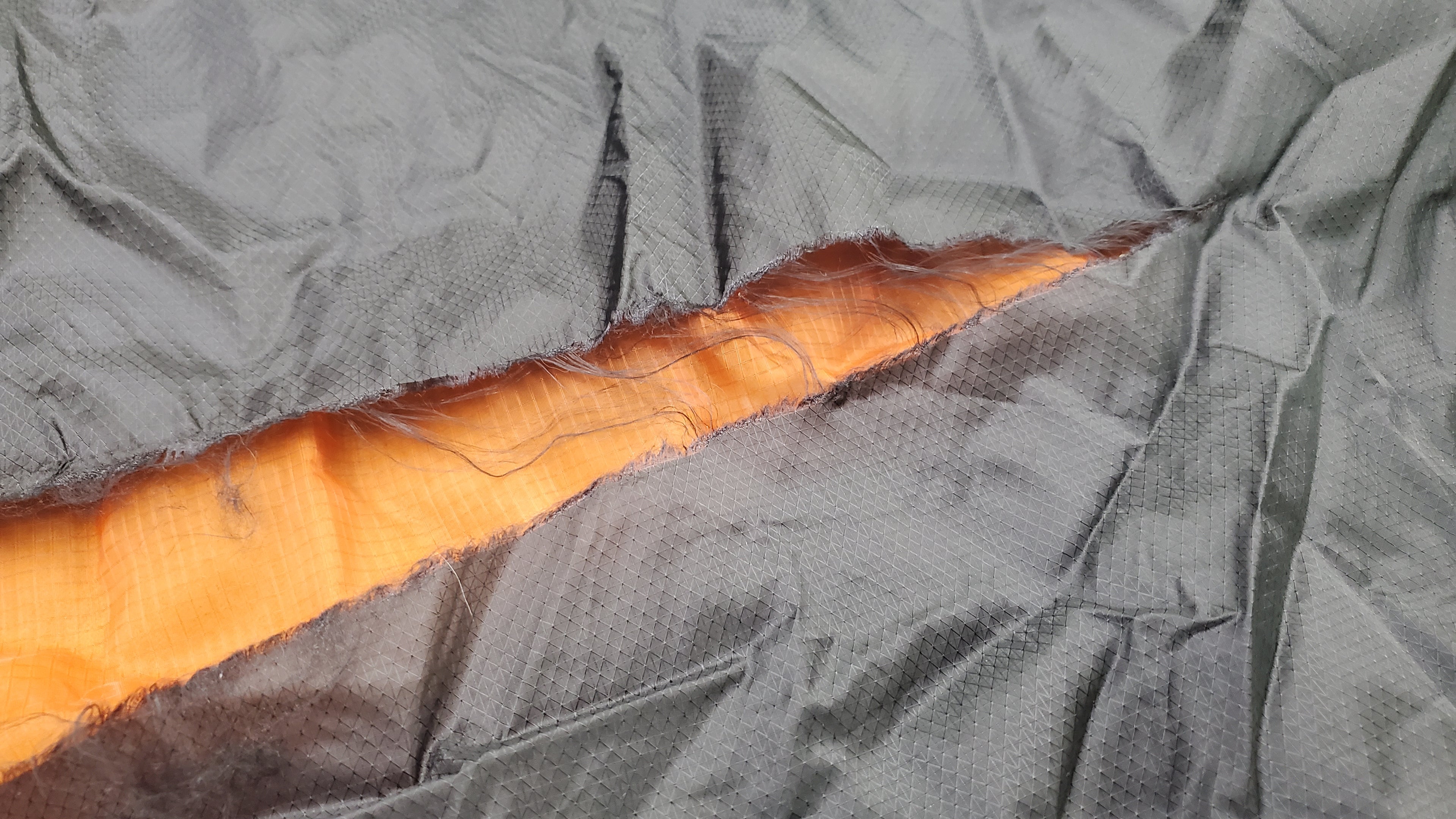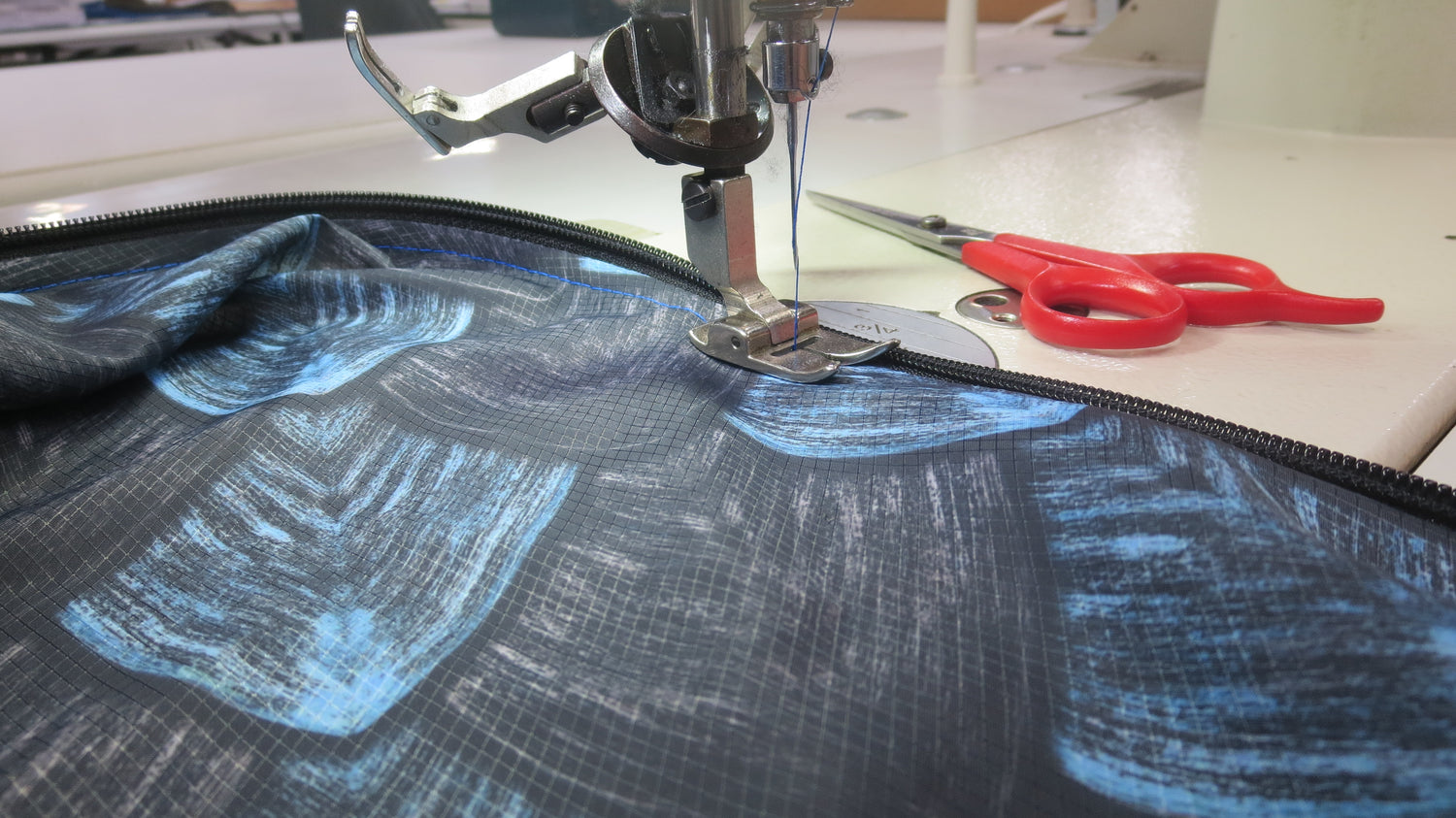
Taking Care of Your Hammock
We want every Dream Hammock to provide you with long-lasting service. Here you will find ways to avoid damaging your hammock, making minor repairs, and making sure your hammock lasts through all of your adventures.
Using your new hammock
Initial Inspection
First off, we highly recommend doing a preliminary visual inspection of your hammock before you lay in it. Check the fabric for any small defects. If there are any flaws that would compromise the strength of the hammock, It is good to identify them before you lay in it. This can also help us determine whether any issues you might find were our fault, caused in transit, from using the hammock, etc. Beyond that, it's good to confirm you received everything you ordered, and that it is to your liking.
Testing your Hammock
After you thoroughly inspect it and have determined that it is safe to lay in, it's time to lay in it! Hang your hammock as described in our article "The Basics" making you are hanging at a 30 degree, with nothing that could damage the hammock in your pockets, away from anything that could cause damage (thorns, briars, rocks, etc), and a safe distance off the ground. Slowly sit in the center of the hammock (not on the edge!), careful to watch for any signs of failure. You may hear the suspension tightening, as this will probably be the first time the hammock bears weight.

Preventing Damage to your Hammock
Let's go over some of the most common damage we see in a hammock, and some tips to prevent any of this from happening to your hammock.
Be careful with your zippers
The most common damage we see has to do with zippers. Sometimes the zipper sliders pop off the zipper teeth, sometimes the teeth are damaged, and sometimes the hammock body or net is damaged as a result of being reckless with the hammock's zippers.
-
Never force a zipper
If the zipper isn’t running smoothly, slow down and figure out why. Slowly work the zipper back and forth. There may be something lodged in it, or it may just be jammed. Forcing the zipper may break the zipper teeth, or tear your hammock if the fabric is caught in the slider.
-
Unzip your hammock more
If you only unzip your hammock just barely enough to get in, the angle of the zipper can create a lot of tension when you put your body weight on the hammock. Opening the zipper a little extra ensures the zipper to open at a narrower angle, relieving tension.
-
Do not sit on your zipper
Sit on the fabric of your hammock, not the zipper. When you sit on the fabric of your hammock, the tension spreads fairly evenly across the zipper, but if you sit directly on the zipper, it creates a lot of tension. Sometimes this can break zipper teeth or pop the slider off.
-
Shift your weight
When trying to unzip your hammock, shift your weight away from the zipper. Putting all of your weight right next to the zipper will add a lot of tension. Typically you'll notice this when zipping around your shoulder - the zippey may be louder and harder to pull. Simply lean away from the zipper and you're good!
Be gentle with your bug net
The netting is typically the most fragile part of a hammock, so it's no surprise that we occasionally see tears, rips, and small holes in mosquito netting.
-
Don't put weight on it
Noseeum netting is not weight bearing material - so avoid putting any notable weight on it. Sometimes folks will accidentally put their hand or elbow on the netting while trying to get out of their hammock.
-
Keep things off the netting
Try to keep away from low hanging branches, brush/briars, or anything else that could catch your netting. Contact doesn't usually poke a hole, but movement against the netting can catch and tear the material.
-
Consider 1.0 Monolite
While standard netting is fairly fragile, 1.0 Monolite makes an extremely durable netting material! If you are worried about accidentally causing damage to your netting, consider using this resilient fabric.
General Tips
So we've addressed some of the most important things you can do to prevent some of the most common damage to your hammock, but we do have a few extra tips here.
-
Choose the right material
Every backpacker wants their pack to be as light as possible, but before choosing an ultralight fabric, be well aware of its properties. If your fabric is too light for your weight, it will not be supportive enough provide a comfortable lay, but it will also decrease the durability and resiliance of the hammock.
-
Never sit on your zipper
It was mentioned earlier that this can damage the zipper, but it can also rip your hammock body. The zipper tape does not spread your body weight across the whole hammock like the fabric does, so putting all of your weight on the zipper alone can put a lot of pressure on the ends of your hammock.
-
Take your shoes off
Keeping your shoes out of your hammock is a good way to avoid wear. The soles of your shoes could abrade the fabric, or even worse - you could have a sharp rock or thorn lodged between the lugs. If you don't want to take your shoes off for an afternoon nap, just pop your feet off the side!
-
Keep hardware seperate
It is pretty rare, but some folks have had their hammock torn as a result of keeping their hammock's hardware in their stuff sack. It's not a bad idea to keep all hardware outside the stuff sack. You can leave your cinch buckles hanging out of each end of the stuff sack if you want.

Making Repairs
If your hammock happens to sustain some minor damage, it's important to address it before the damage gets any worse. Below you will find some ways to address any damage.

Patching a hammock
If you ever notice a small hole or wear in your hammock, don't lay in it - small holes can grow rapidly when there is weight in your hammock.
Use a piece of tenacious tape, making sure the patch extends well past the damaged area. Burnish the patch to make sure you have strong adhesion.

Sew it yourself
If the damage in a non-weight bearing area (such as a net), you can attempt to patch or darn the damaged area at home!
We do not recommend that you attempt to repair any damage in a weight bearing area (aside from adding a tenacious tape patch, explained above) without contacting us.

Contact the experts!
When in doubt, send us an email! We can give you advice on making small repairs to your hammock, making sure it's done safely. If not, you may be able to send it to us so we can fix any issues.
